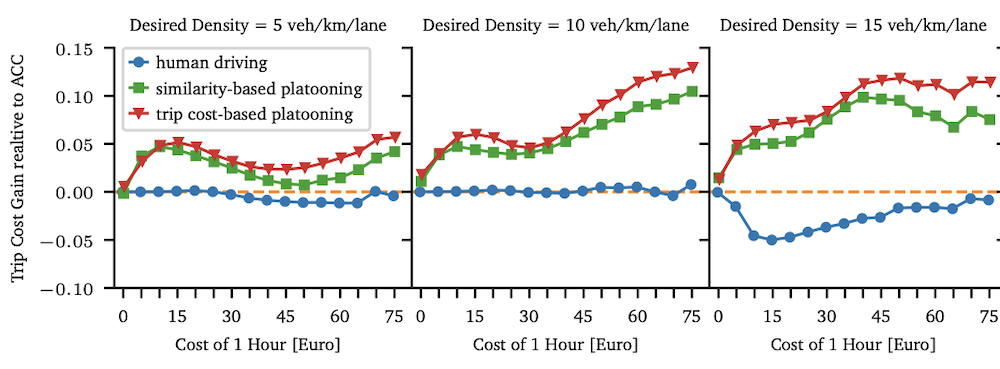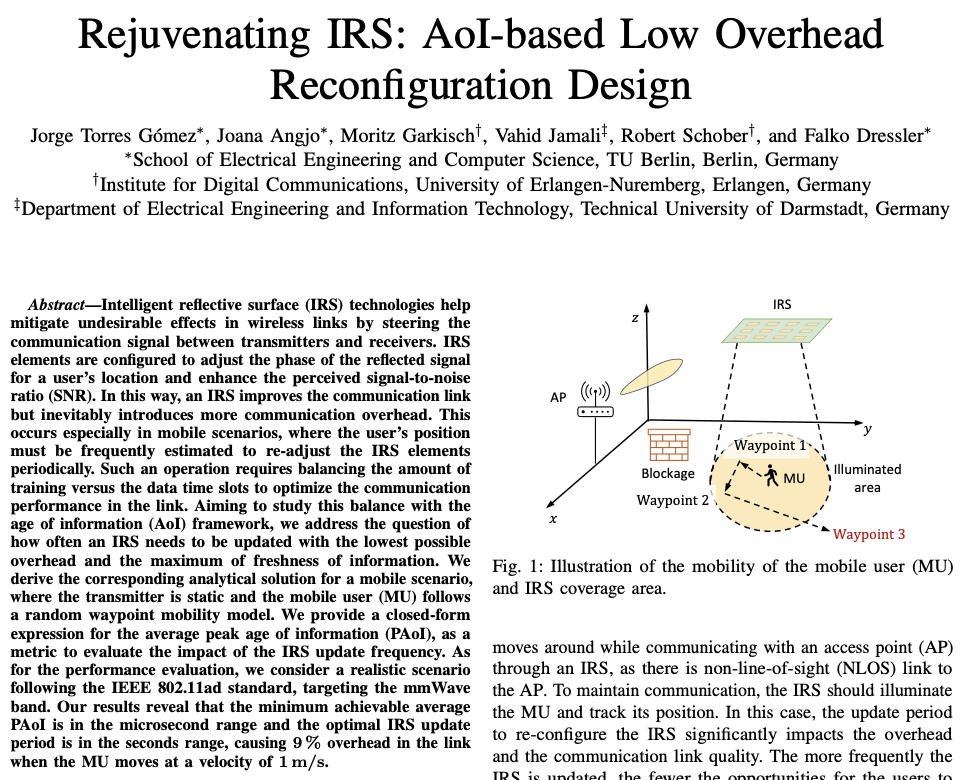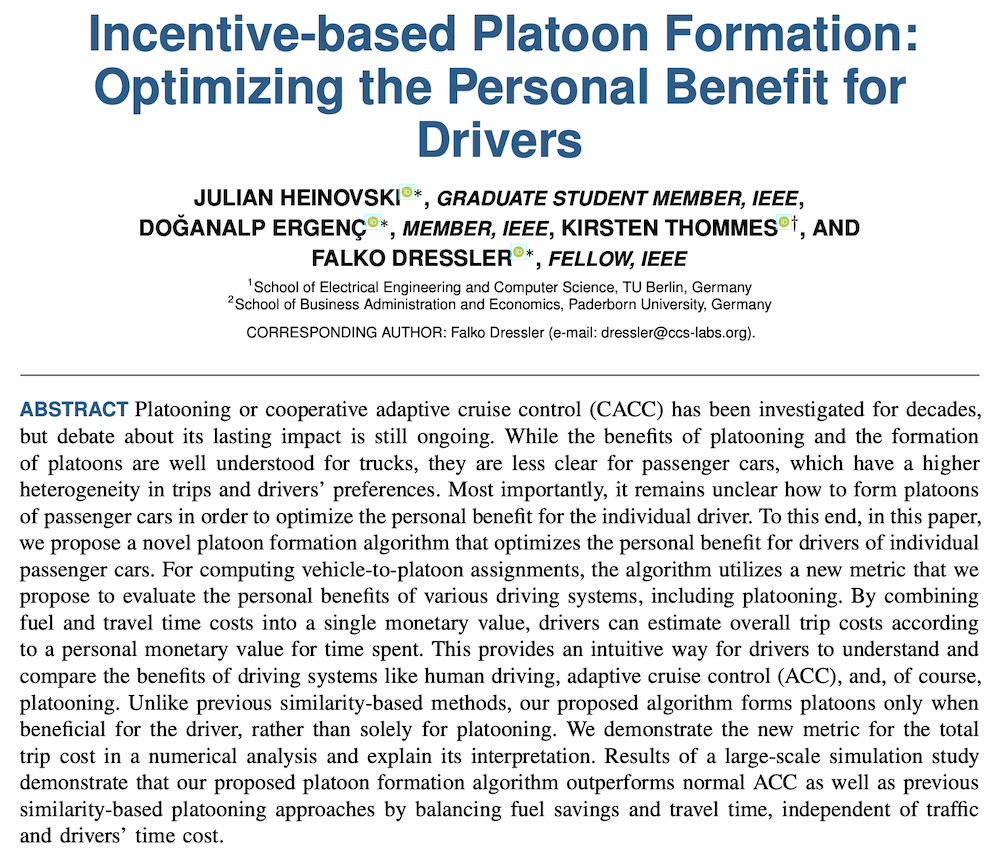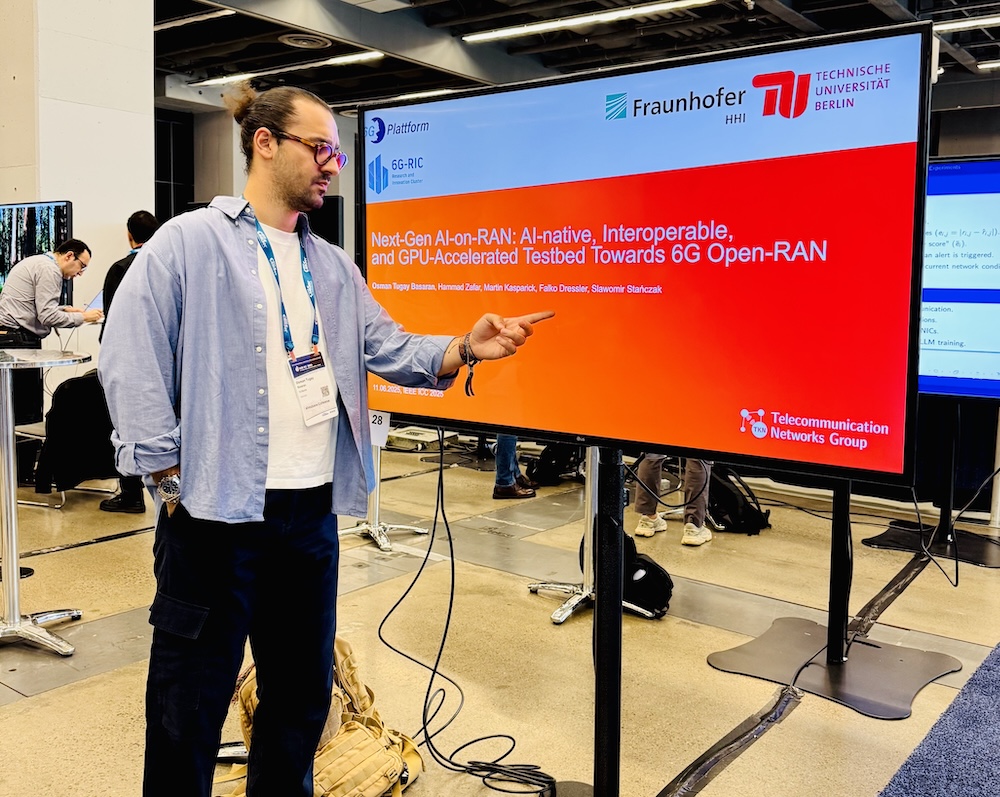Literature Database Entry
schwarzkopf2023when
Georg Schwarzkopf, "When ns3-gym meets gr-gym: a cross-layer machine learning approach," Bachelor Thesis, School of Electrical Engineering and Computer Science (EECS), TU Berlin (TUB), December 2023. (Advisor: Sascha Rösler; Referees: Falko Dressler and Thomas Sikora)
Abstract
While widely used, wireless networks based on the Wi-Fi standard often face challenges in optimizing their performance. One possibility for improvement lies in the application of cross-layer optimization, wherein different layers of the network collaborate by exchanging information, leading to enhanced performance. Several studies have already demonstrated the potential of cross-layer optimization in improving various network properties. Additionally, Reinforcement Learning (RL) has emerged as a powerful tool in the realm of communication networks, offering the capability to address complex optimization problems. In my thesis, I look into the impact of cross-layer optimization using reinforcement learning on the performance of Wi-Fi networks. To conduct this exploration, I have developed a framework that integrates simulators for different layers of the network and provides an interface for RL agents. This framework builds on top of the existing frameworks ns3-gym, which utilizes a Network Simulator 3 (ns3), and GrGym, which uses GNU Radio for simulation of radio communication systems. Both of these simulators can be used as environments by RL agents, thanks to these frameworks. My framework combines the capabilities of ns3-gym and GrGym to enable the research of cross-layer optimization. The framework uses the ns3 to simulate the layers from the application layer down to the Medium Access Control (MAC) layer. The physical layer of the Wi-Fi is then simulated by the GNU Radio. The framework manages the exchange of information between these layers, which are simulated in parallel by two simulators. Utilizing the capabilities of the ns3-gym and GrGym, the framework provides the agents with the Gymnasium interface. Using this framework, I have designed and implemented RL agents tasked with optimizing network parameters. These agents are tasked with optimizing two parameters in the Wi-Fi-based scenario, involving two nodes. The first parameter is the packet size, and the second parameter is the Modulation and Coding Scheme (MCS). The MCS is located in the physical layer, and the packet size is controlled by the application layer. The agents either operate independently, optimizing parameters for individual layers, or collectively, optimizing parameters across multiple layers simultaneously. The evaluation of these approaches has demonstrated that cross-layer optimization, facilitated by reinforcement learning, leads to a substantial increase in network performance. Contrary to initial expectations, both the traditional approach and the cross-layer optimization approach demonstrated suboptimal performance, with the latter performing even worse. I think the potential explanation for such results is not the optimal choice of the parameters used for RL learning. This highlights the critical role that parameter tuning plays in the effectiveness of RL agents in the context of cross-layer optimization. While the current study did not achieve the expected results, it provides the basis for future investigations in the Wi-Fi domain.
Quick access
Contact
Georg Schwarzkopf
BibTeX reference
@phdthesis{schwarzkopf2023when,
author = {Schwarzkopf, Georg},
title = {{When ns3-gym meets gr-gym: a cross-layer machine learning approach}},
advisor = {R{\"{o}}sler, Sascha},
institution = {School of Electrical Engineering and Computer Science (EECS)},
location = {Berlin, Germany},
month = {12},
referee = {Dressler, Falko and Sikora, Thomas},
school = {TU Berlin (TUB)},
type = {Bachelor Thesis},
year = {2023},
}
Copyright notice
Links to final or draft versions of papers are presented here to ensure timely dissemination of scholarly and technical work. Copyright and all rights therein are retained by authors or by other copyright holders. All persons copying this information are expected to adhere to the terms and constraints invoked by each author's copyright. In most cases, these works may not be reposted or distributed for commercial purposes without the explicit permission of the copyright holder.
The following applies to all papers listed above that have IEEE copyrights: Personal use of this material is permitted. However, permission to reprint/republish this material for advertising or promotional purposes or for creating new collective works for resale or redistribution to servers or lists, or to reuse any copyrighted component of this work in other works must be obtained from the IEEE.
The following applies to all papers listed above that are in submission to IEEE conference/workshop proceedings or journals: This work has been submitted to the IEEE for possible publication. Copyright may be transferred without notice, after which this version may no longer be accessible.
The following applies to all papers listed above that have ACM copyrights: ACM COPYRIGHT NOTICE. Permission to make digital or hard copies of part or all of this work for personal or classroom use is granted without fee provided that copies are not made or distributed for profit or commercial advantage and that copies bear this notice and the full citation on the first page. Copyrights for components of this work owned by others than ACM must be honored. Abstracting with credit is permitted. To copy otherwise, to republish, to post on servers, or to redistribute to lists, requires prior specific permission and/or a fee. Request permissions from Publications Dept., ACM, Inc., fax +1 (212) 869-0481, or permissions@acm.org.
The following applies to all SpringerLink papers listed above that have Springer Science+Business Media copyrights: The original publication is available at www.springerlink.com.
This page was automatically generated using BibDB and bib2web.






